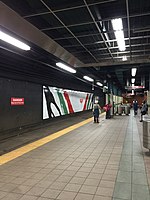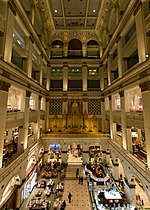St. John the Evangelist Catholic Church (Philadelphia, Pennsylvania)
Former cathedrals in the United StatesGothic Revival church buildings in PennsylvaniaReligious organizations established in 1830Roman Catholic cathedrals in PennsylvaniaRoman Catholic churches completed in 1832 ... and 1 more
Roman Catholic churches in Philadelphia

St. John the Evangelist Church is a parish of the Roman Catholic Church in Center City, Philadelphia, within the Archdiocese of Philadelphia. From 1838 to 1864 it served as the cathedral for the diocese. The historic Gothic Revival parish church, completed in 1832, is located just south of Market Street on 13th Street, a little more than a block from Philadelphia City Hall. Since 1991, it has been staffed by the Capuchins, a Franciscan order, though for most of its history it was served by diocesan priests. The current pastor is Father John Daya, OFM Cap.
Excerpt from the Wikipedia article St. John the Evangelist Catholic Church (Philadelphia, Pennsylvania) (License: CC BY-SA 3.0, Authors, Images).St. John the Evangelist Catholic Church (Philadelphia, Pennsylvania)
South 13th Street, Philadelphia Center City
Geographical coordinates (GPS) Address External links Nearby Places Show on map
Geographical coordinates (GPS)
| Latitude | Longitude |
|---|---|
| N 39.951293 ° | E -75.161276 ° |
Address
St. John the Evangelist Church
South 13th Street 21
19148 Philadelphia, Center City
Pennsylvania, United States
Open on Google Maps









